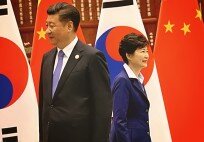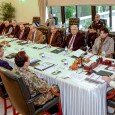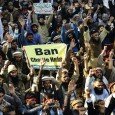The Survey
Pique Magazine conducted a consumer banking survey of over 500 bank customers across five major cities in the country. The questionnaire based survey asked the customers to rank the service delivery of their banks, provide qualitative feedback, their biggest complaints and some demographic and quantitative data to help us frame their answers in a better context.
Reports and statistics were also taken from the SBP’s official site and research papers.
Our demographics show that most customers for private banks fall in the age group of 21 to 40 years, whereas the age group of 41 and above has more representation in nationalized banks.
37.5% of customers employed in public sector organizations have their accounts in nationalized banks whereas 39.8% of customers employed in private sector opt for private banks. 61.9% of customers are holding saving accounts in nationalized banks, whereas 57.4% of customers in private banks are holding current accounts, meaning that while the overall CASA ratio is more or less balanced, there is a definite tilt towards saving accounts in pubic banks, this is correlated with the (generally) better rate of returns offered.
In the private sector, 3 year term deposits are gone and banks are now offering only 1 year deposits at an average deposit rate of about 8%.
Middle to higher income people, those who earn more than Rs50 thousand per month, are largely in the private banking sector. Lower income people, who earn less than Rs20 thousand per month, are almost entirely being served by the public banking sector.
On average, our respondents change banks every two years. 67% of them have accounts in multiple banks, to mitigate the bad services of one and take advantage of the best service aspects of others, there seems to be no single banking solution for all of a customer’s needs.
For privatize banks the most important stated factors for selection are the online banking facilities, charges applied on maintaining minimum balance and customer service. For public sector banks the criteria of selection is based on personalized service, rate of savings and ease of opening an account.
Surprisingly the number of branches and ATMs didn’t rate very highly on the selection indicators, in fact, they mainly showed up in the complaints section.
A lot of the upwardly mobile middle class consumers prefer Internet Banking (IB) services over branch banking due to convenience, speed and cost effectiveness. Most of them also cited the lack of often infuriating person to person interactions at bank branches as a reason for using IB services.
When it comes to ATMs however, people across all classes are equally concerned with ATM problems (cards being stuck) and security problems, especially in Karachi where robberies outside ATMs is not an uncommon occurrence.
The other biggest complaints about ATMs is the lack of a cash depositing facility the machines and the maximum withdrawal limit of Rs.25 thousand, which most people believe should be increased to Rs 50 thousand.
There are currently 9,541 bank branches in the country, out of which 7,416 bank branches, or 78%, are offering online banking facilities. There are about 14 million ATM cards in the country, making ATM transactions a whopping 41.5% in terms of overall volume and 12.5% in terms of value.
But people aren’t really using the ATMs of their own banks, making transactions from a different bank’s machine about 40% of the time.
The main reasons cited for using another ATM were mostly the link being down or the machine not functioning (about 81% of the cases). In the other 19% of the cases it was stated that an ATM belonging to the customer’s bank was simply not in close vicinity.
From our surveys, Allied Bank had the best review of its ATM network. ABL was also the pioneer in the field of online banking in Pakistan, and introduced many of the currently popular ideas in 2004 in Pakistan. It also has the biggest online network with 806 online branches in the country and 674 ATMs.
However, in absolute numbers cheque deposits and cheque clearing are still the most commonly used services by customers, the charges levied on these services are higher in private and foreign banks than in nationalized banks.
When asked about the three worst things about the sector overall, respondents most often mentioned interest rate spreads, 1-Link downtime and hidden transaction costs and charges. Some also complained of preferential treatment and separate floors for High Net-Worth Individuals (HNWIs).
The interest spread of Pakistan’s banking industry has been on the rise for the last few years. The difference between deposit rates and interest rates is about 7%, which heavily discourages saving accounts, or banking transactions in general.
While all of our respondents were bank account holders, they still had differing opinions of the best options for saving money. 51% of them still cite gold and related commodities as the best way of investing their money. Only 15% thought that savings accounts in banks were the way to better their financial future. 9% believed in investing in foreign currencies and finally 6% would rather invest their money in real estate.
This is also perhaps because of the complicated (especially after the IMF influenced anti-money laundering regulations) procedures and requirement to open bank accounts (proof of wealth, NTN, etc) but is also certainly because of the low deposit rates that await potential savers.
Taking all this data into account, Pique has come up with service ratings on the individual banks that demonstrate how well received and effective their services, customer management, infrastructure and overall policies are. Combined with credit ratings from PACRA/JCR-VIS, Pique offers you a reliable ranking of the major commercial banks in Pakistan. Most of the markers are self-explanatory, Return On Equity (ROE) is taken as the best measure of what the bank is doing with your money. The CEO salaries are annual.
The complete commercial banking review
After the nationalization of domestic banks under the Pakistan Banking Council in the 1970s, a highly politicized and much debated decision, the financial landscape of Pakistan witnessed a major change in 1991 when two of its oldest and biggest banks, Muslim Commercial Bank (MCB) and Allied Bank Limited (ABL), were once again licensed into private hands.
This started a privatization drive that has continued into the new millennium, the idea being that financial liberalization and deregulation of banks would stimulate what was increasingly being touted as a stagnating sector, which in turn would spark economic growth.
It was also argued that bureaucratic infringement into banking institutions was causing massive sector wide inefficiencies in the decades leading up to privatization. The cost inefficiency of these banks was seen as a significant factor in the slowing down of the economy. The banking sector after all, in its capacity of financial intermediation between the borrower and the lender, is the prime facilitator of economic activities.
The policies initiated in the early nineties reaped some short term benefits from 2002-07, before the economic crisis rocked the banking industry. During this period, banks determinedly competed with each other to win over consumers with a barrage of credit cards, car loans, cash lines, and financing of consumer durable products. Citibank nurtured bankers were the top executives across various other banks and the central model of consumer lending boomed.
A few of the banks were even brave enough to tap the risky Small and Medium Enterprises (SMEs) segment, which was deemed to be the backbone of a developing economy, but was never a favorite of bankers’ themselves. 
In addition, the corporate sector also enjoyed credit facilities at low rates. There was not enough fiscal borrowing from the banking system as external money was flowing in to fill the gap in expenditure and tax revenues. During that time a number of foreign banks entered the field as well, many local groups bought banking licenses and merger and acquisition deals were struck at exorbitant rates.
However, following the 2008 balance of payment crises, the banking industry took a battering. Toxic assets mushroomed across all banks, owing to sharp currency depreciation, higher inflation, low growth and high interest rates. The loans infection ratio persistently increased, reaching a peak of 17% in 2011. The banks became reluctant to lend to various industries and, simultaneously, the borrowers were losing their enthusiasm as well – overall, the banking advance to deposits ratio fell from 81% in 2008 to a mere 51% in 2013.
Scrutiny on the performance of the contemporary banking sector, therefore, is as important to depositors, owners, potential investors, and of course, to policy makers, today as it was three decades ago.
This special report by Pique assesses the performance of the sector as a whole and the individual banks themselves, reviewing financial performance, contribution to the economy, consumer service and compliance with State Bank regulations, giving both a picture of the contemporary banking sector and a ratings review based on financial health and quality of financial services.
What are banks contributing to the economy
While profit efficiency is a commercial bank’s ultimate goal, cost efficiency is an important means of reaching long-run profit efficiency. The efficiency of the banking industry influences the cost of financial intermediation and stability of financial markets. Unfortunately cost efficiency has scarcely gotten better with private licensing.
An analysis of the cost efficiency of Pakistani commercial banks, public, private and foreign, based on the distribution-free approach using expenses (including interest expenses) to assets ratio, conducted by the State Bank of Pakistan (SBP) in 2012, demonstrated the following trends.


Foreign private banks are performing the best on the cost frontier; the average efficiency of foreign banks is roughly 75%, followed by about 70% for domestic private banks and 63% for nationalized commercial banks.
The average efficiency level of all commercial banks, weighted by numbers, is also about 70% which, when compared with similar studies conducted elsewhere, is a fair few percentage points behind the average 77% in India, or the average of 87% in the US. In Europe the efficiency levels are even higher.
That by itself is not damning considering the context of the economies, but an interesting fact that stands out is that the privatized banks show a Return on Assets (ROA) ratio of 2.1%, and Return on Equity (ROE) ratio of 22.1%, whereas the public sector banks show a 2.4% ROA and 19.8% ROE. There seems to be no great difference in ROA and ROE of the private and public sector banks.
ROE is generally considered the best measure of profitability from a shareholder’s point of view, it narrates the profitability on the initial investment by the original shareholders. The problem of shareholders not getting the best out of their investments in private banks is something we’ll come back to later.
The main contributors to private sector inefficiency are Non-Performing Loans (NPLs) followed by bank advances. In general, a 1 percent increase in advances enhances the inefficiency of banks by 0.25 percent, mainly due to problems in the ways these advances are meted out. Which has a lot to do with the consumer base these banks have to work with.


Statistics show that 86% of the Pakistani population is unbanked, which means an overwhelming majority don’t possess direct bank accounts don’t use insurance or other financial products. Which means money has to be circulated within, and profits earned from, just 14% of the population.
Most Pakistani’s, then, have extremely low access to finance. This has been a long-standing constraint to economic growth in Pakistan, the absence in the credit market of small and medium-size enterprises plus women. As the growth engine of Pakistan’s economy, these enterprises make up about 90% of private enterprises in the industrial sector, employ 78% of the non-agriculture labour force, and contribute more than 30% to GDP. Yet lending to these firms, at 16% of total lending, is below demand.
The biggest criticism commercial banks face today is that they invest in risk-free government bonds at attractive short-term rates, over riskier corporate debt or personal lending, thus crowding out private investment. High intermediation costs, as evidenced by large and rising interest rate spreads, suggest that competition is weak and the administrative efficiency of commercial banks is poor. Lending rates to the private market are also very high.


As the state’s fiscal deficit shot up in the last half decade, it was in the range of 6-8% of GDP during this time, bank’s saw a unique opportunity and replaced loans to the private sector with government papers – the government borrowing from commercial banks increased manifold from Rs516 billion in June 2009 to Rs3.2 trillion to date. On the other hand, the credit to private sector virtually stagnated, as it increased only marginally – from Rs2.9 trillion in 2009 to 3.3 trillion in 2013. The investment-to-deposits ratio (IDR) of banks soared from 34% to 52% in the past five years.
This was the time when banks swayed away from their prime function of financial intermediation and virtually all the incremental deposits were deployed to finance the fiscal deficit. Since the return on government papers is less than private loans, the profitability of banks was compromised. Effectively, had it not been for such a massive increase in the federal government borrowings, the profitability of commercial banks would have stagnated in the last five years. From Rs73 billion in 2007, the profits of commercial banks nosedived to Rs43 billion in 2008 before hitting Rs178 billion in 2012.
The banks tried to combat the situation by cutting costs, wherein the most commonly deployed method was to enhance the proportion of low cost deposits in the banking liability mix. The low cost current and savings accounts were the prime choice of any bank manager to offer to the client. The banks have colluded to make this change happen.
This is evident from the fact that the composition of CASA (Current Account and Saving Account) increased from 59% in 2008 to 68% in 2013. That’s how banks maintained their high spreads despite assets being skewed towards low risk and low return government papers.
All of this affected small and medium-size businesses very adversely, as large corporations started to retain earnings rather than take expensive commercial bank loans to cover their financial needs. Pakistan is well below regional average in credit availability to the private sector relative to income per capita—lower than Bangladesh, India, and Sri Lanka. Credit to the private sector declined from about 28% of GDP in fiscal 2007 to about 16% of GDP in fiscal 2012.
A small segment of the population (read urban) has access to all the banks, and a client can pick and choose according to his needs; whereas the majority living in small towns or rural areas have a limited choice and either do not have a bank account or have access to very limited facilities. There are, for instance, more banks on Rashid Minhas Road (Karachi) or in Phase 3 DHA (Lahore) than during the entire drive from Sukkur to Ghotki.
Another factor that is curtailing the growth potential in the country is its low savings habit as the saving to GDP ratio is only 12-14%, which is almost one third of India’s. Banks are failing to attract savings by not offering innovative products and better returns.


Sector wide problems
A very important consumer segment that remains neglected by the banks is mortgage financing. The strong point is that the SBP is cognizant of the need to develop housing finance, as it not only caters to the need of millions of households but will also boost tens of allied industries by creating economic activities and generating employment.
Usually mortgage is long-term loans (20-25) years, while liability maturity profiles of banks are very low owing to higher concentration of CASA. This has hindered banks to go for long term industrial financing or to come aggressively into mortgage financing.
Recent World Bank survey shows a backlog of 8.8 million housing units in 2008. This gap is more pronounced in urban centres where people are continuously migrating from rural areas. The current annual requirement is 1.5 million housing units but only 0.6 million are being built. Of these, 90 per cent are being provided by private sector and the remaining by public sector.
The process of obtaining loans is cumbersome and expensive and discourages borrowers. The mortgage market is small in both relative and absolute terms. The mortgage loan to GDP ratio in nominal terms rose only from 0.49% since 2003 to its peak at 0.98% in 2006 but again declined to 0.7%. This ratio is very low when compared with other countries, for example the 9% in India
Deposit rates are also disparagingly low. Whereas average deposit rate during one year periods between September, 2008 and 2009 decreased by 150 bps, the lending rate decreased by 0.1% during the same period from 13.8% to 13.7%. Bankers have argued that fall in deposit rates is justified because of cut in interest rate by the SBP by 200 bps during the past nine months.
Consequently, bank spread has increased to 7.4% near to its previous level of more than 7%. It is perhaps one of the highest in the world to the great disadvantage of customers. It clearly reflects that the banking sector has acted to make up for its falling incomes.


Banks’ inability to mobilize high deposits has kept savings-to-GDP ratio low around 14.0 per cent, much lower than the regional average of around 20.0 per cent. Senior bankers admit that the growth rate of bank deposits is lower than required and there is a need to kick-start lending to the private sector to facilitate economic growth.
Businessmen complain that the banking sector’s failure to offer reasonable returns on deposits have led to haphazard investment by people in areas like the stock market, real estate, gold and once again in hard currencies. It has even contributed to capital flight and rising undocumented investment abroad.
Banks remained focused on quick profit-making in the first seven years of this decade which eventually landed them in a situation where they failed to expand deposit base on the one hand and find ways of least risky yet highly profitable areas of lending. This too was a key factor behind ballooning of bad loans and NPLs.
Some banks which failed to recover their dues tried improper means for recovery and had to face embarrassing situations and even lawsuits from defaulters, for trying bullying and strong arm tactics on consumers.
The decline in the consumer credit is also one of the major factors for fall in production of some of the industries which thrived and expanded their capacity mainly due to the liberal financing by the banks of their products.
One major example is of the automobile industry which has suffered a decline of about 50 per cent in its production. Although raising the prices of various brands of cars has remained a usual thing for car manufacturers, they, for the first time, have reduced the prices in the hope of disposing off their stocks. But the chances of any substantial increase in demand do not seem to be too bright.
Consumer finance has suffered a setback because it was prompted by excess liquidity and low interest rates and was not part of a well-considered policy.


Have they cleaned up their act
It wasn’t long ago that banks regularly entertained accusations of willful defaults, Ponzi schemes and political machinations. The story of Mehran Bank and Younis Habib pretty much tainted an entire decade for financial institutions. Habib recently, and much belatedly, finally admitted giving money to IJI politicians in the 1990 general elections to stand against PPP.
While with Habib Bank Limited (HBL), Younis Habib was arrested on April 7, 1994 for misappropriating sale proceeds of the Dollar Bearer Certificate. He was convicted for fraud and embezzlement on December 14, 1995 and still ended up with the charge of Mehran Bank.
Years of prudential regulations by the SBP and introduction of best corporate practices after the increasing privatization of the sector was meant to curb these unsavoury practices. So how does the banking sector fare today in terms of corporate ethics and legality?
In 2011, news broke that the Bank of Punjab (BoP), under the chairmanship of Hamesh Khan, had signed off on Rs52 billion worth of lending to Haris Steel Mills without adequate documentation and collateral. The bank ended up needing a bailout of Rs10 billion from the Punjab government, its largest shareholder, in early 2009.
Sometime later, National Accountability Bureau (NAB) deputy prosecutor general Raja Amir informed the a Supreme Court Bench that one of the directors at BoP, Farid Mughees, had also contravened bank regulations to give Rs5 billion to Chaudhry Pervez Elahi for the purchase of his Phalia Sugar Mill.
Pervaiz Elahi, incidentally, was also the person who appointed Hamesh Khan as the CEO of BoP in 2002. Other BoP directors who took illegal loans during his tenure were Khurrum Iftikhar of Amtex textile, Gohar Ejaz of APTMA and Mian Latif of Chen One.
In 2010, NAB arrested Vice-President Askari Bank Lahore, Khawar Rasheed, and former Manager Bank Alfalah on the charges of embezzlement of Rs200 million through fraud, misuse of authority and criminal breach of trust.
The same year, the FIA Commercial Bank Circle (CBC) unearthed a scam worth more than Rs1 billion in United Bank Limited (UBL), Faysal Bank and NIB bank.
Two accused gentlemen managed to get loans approved on fake documents of properties with the connivance of bank officials. The scam involved properties in different parts of Lahore. The FIA CBC released a detailed statement saying that the accused got illegal loan approvals worth Rs400 million from UBL, Rs370 million from Faysal Bank and Rs350 million from NIB.
Even the privatization drive itself didn’t go unsullied. When 51% of HBL shares were sold to the Agha Khan Fund for Economic Development in December 2004 for Rs22 billion, its total assets were reportedly worth Rs570 billion. HBL had 1437 branches and another 40 in 26 countries; the company owned the branch buildings as well. UBL was also sold for only Rs13 billion.
It was the dictatorial regime of Pervez Musharraf that oversaw these sales, led by his close associate and Prime Minister Shaukat Aziz. Low-grade employees of HBL were allegedly forcibly terminated from their jobs, and allegations of corruption, fraud and embezzlements were leveled against President HBL Zakir Mahmood and Chairman Sultan Ali.
The Banks’ Trade Unions Alliance of Pakistan accused banking administrations of trying to undermine the existence and functioning of trade unions, enacting anti-labor endeavors which reduced the number of low-grade employees in banks by 20%, down from the70% employment ratio they enjoyed a decade ago.


Do the banks run as an executive level cartel
Small and medium sized banks have been merging or disappearing ever since minimum capital requirements were raised by the SBP. The latest raise in capital requirements were issued in 2009. The choice left for the newer entrants and smaller banks was either to issue shares or be swallowed by bigger bank.
Atlas Bank sold 58.31% shares to Mauritius-based Suroor Investments limited. Samba (formerly known as the Saudi American Bank) issued right shares in public to replenish capital stocks.
The stated logic of driving out small banks was to make regulatory measures more effectives and mitigate financial risk for the sector and therefore for the economy and consumers at large. But as we have seen already, large banks are already risk-averse, barely lending out to the private sector, and largely ignoring small and medium business. This is where more localized, smaller banks could have potentially started filling the gap.
As a result of SBP measures however, shrinking space for small banks has increasingly culminated in a banking sector oligarchy, lead by the often position swapping executives (MDs and CEOs), a cartel of sorts which handles the wealth of the Pakistani elite between themselves.
Three years after these SBP reforms, in 2012, the Competition Commission of Pakistan (CCP) imposed a penalty of Rs770 million on the ATM service provider 1-Link Limited, and the banks themselves (who are the constituents of this service provider) for promoting uncompetitive behaviour and deciding an illegal uniform service rate.
Rs50 million worth of fines were imposed on 1-Link. A further fine of Rs50 million each was placed on the 11 founding member banks and Rs10 million fine was imposed on each of the 17 non-founding member banks.
The founding members were National Bank, ABL, HBL, Bank Alfalah, Askari Bank, Soneri Bank, NIB, UBL, SCB, Faysal Bank and Bank Al-Habib. These 11 major banks, as a consortium called 1-Link, hold 80% of the market share in shared ATM network services in Pakistan.
The fixing doesn’t just stop there, these banks have also been accused of colluding with each other’s treasuries to milk the fiscal debt ridden Pakistan government for fixed and high rates of return. They set prices as a practical cartel. Part of the reason for their heavy inclination towards government bonds is that they never lose out to competition; there is no risk on their part.
The savings and interest rates show little variance. Even now, there is a uniform savings rate of 6% on offer, the SBP from time to time tries to take regulatory measures against such fixing, but as we will confront in the consumer review section, the biggest problem with a liberalized financial market is that the wealth is not concentrated where it can be easily regulated.


Executive compensation and performance
The combined pre-tax profit in the banking sector for the calendar year 2001 was roughly Rs1.1 billion, which has risen to about Rs185 billion in 2012. It’s been a slow but steady rise in profits, mainly based on squeezing out the government sectors High Net Worth Individuals (HNWIs), but the increments aren’t entirely been shared with shareholders and have not translated to greater returns for depositors either. The boards of directors share the spoils among themselves and top management positions, where once the spread of labour expense was equal, the comparative standard deviation in labour expenses between private and public banks is now almost double, meaning that the difference between the least paid worker and the most paid worker at a private bank is double that of the same difference in a public bank.
In the last five years, the nine largest banks in the country by share of financial volume – ABL, Bank Alfalah, Faysal Bank, HBL, MCB, National Bank, NIB, SCB, and UBL – gave out Rs258 billion to their staff in terms of salaries, with the lion’s share of the allowances going to top level executives. Fifty-two Managing Directors (MDs) and CEOs of banks were given Rs2.8 billion in allowances in the same period.
The highest salaries allowance were given by Faysal Bank to its MDs and CEO, a cool sum of Rs 768 million, while Standard Chartered Bank stood second with Rs571 million given to its MDs and CEO. UBL came in at number three with salaries upwards of Rs374 million given to its top five employees.
These figures show that the top management of a bank get about 20 per cent of the salaries even though they make about one or two per cent of the employee strength.
The figures for the other banks are Rs285 million by MCB, Rs262 million by NBP, Rs226 million by ABL, Rs 163million by NIB, Rs98 million by Bank Alfalah and Rs73 million by HBL. In total, the administrative expenses, including benefits and board room meetings and other assorted executive expenditures, came to Rs498 billion for the above banks.
While overall the banking sector’s pre-tax profits plunged by 8.3% in 2013, the annual remuneration of a majority of bank CEOs went up nonetheless. A total of 20 bank CEOs saw their paycheques improve, even though the bottom line payments for all these banks shrank during last year with their average spread reducing to 6.2% from 7% in the previous year.
Only 38 people out of more than 158,000 professionals that the country’s banking sector employed in 2012 held the title of CEO/president.
Pique approached a number of CEOs and bank PR managers for comments over this perceived exorbitant executive compensation. They were extremely non-responsive and when they did reply, they were curt and disinterested in the matter. The most common reply was simply that ‘they deserve it, for bringing years of experience of handling big money, and adding value to the bank with their executive services’.
Low-grade bank employees meanwhile, complain of being overworked and underpaid, treated badly by the higher management, having little job security and even fewer social safety nets provided by the institutions.
In 2012, shareholders of Faysal Bank protested against the bank president Naveed Khan’s annual salary of Rs180 million. The president and his administration had to leave the Annual General Meeting (AGM) early out of fear of being beaten.
The 100 strong shareholders reportedly began to start chanting slogan as they left the meeting themselves. At the last AGM they had demanded to have the president’s salary reduced. The administration promised to do so, but the converse happened next year, as he got an increment instead.
Naveed Khan had also served as Chairman of a task force for the SBP and as Chairman of the Academic Board at the Institute of Bankers Pakistan (IBP). The small rotation of high posts between a clique of elite bankers is nothing new.


Islamic banking
Finally, there is the newer recourse of Islamic Banking for all those jaded with conventional banks. Even beyond the disillusionment, for many religiously fastidious people, the lack of Islamic banking services was a major deterrent to using banks to begin with.
There has been a major turnaround in this field during the last decade, as almost every commercial bank has started offering Islamic Banking branches, thereby mushrooming to 10% of the total banking size in a decade. This concept is considered to have immense potential in an economy where religious beliefs are deeply engrained and oversee everyday practices. It is worth nothing that in the post-crises world, the size of Islamic banking sector has grown at a much faster pace in Islamic countries e.g. Malaysia, UAE, KSA, and others. This is exactly why virtually all the big players are aggressively entering into this market segment. Islamic windows of Bank Alfalah, SCB and a few others are growing aggressively while others have plans either to acquire Islamic banks or to develop their own brands.
This sector, however, brings with its own bulk of problems. Meezan Bank, the pre-eminent Islamic Bank in the country, has had its profit after taxation increased by an incredible 105.6% the last year (a total revenue jump of Rs 3,391 million from the previous Res 1,649 million). But Meezan Bank is still paying profits to its account holders with decreasing rates; for example the eleven month average profit rate decreased from 5% to 4.99% and Meezan Bachat Account profit rate decreased from 7.87% to 7.82%.
Meezan is a Modaraba based Islamic Bank, which implies a contract between two parties whereby one party, the Rab-ul-Mal (investor) entrusts money to the other party called the Modarib (Manager), to put in his management expertise and utilize it in a pre-agreed manner. Profits of the Modaraba are also shared in a pre-agreed ratio and in proportion to the capital invested. The loss is borne by the financiers only in proportion to their share in the total capital
But this is not what is happening in the reality of it. Like Meezan Bank, many banks are only offering superficial Islamic financial services, where the consumer indeed gets roughly a pre-agreed return on investment, but the banks themselves are well integrating into the profit making practices of conventional banking, and eat up even more shares than in a conventional shareholder relationship.
Meanwhile, small financial institutions who get licensing based on religious sentiments have started running massive Modaraba scams up and down the country. NAB has seized the assets of 5 such companies in the last year alone, and more Muftis and religious personalities are being arrested every other month for churning profits in the name of providing Islamic financial services.






























































































